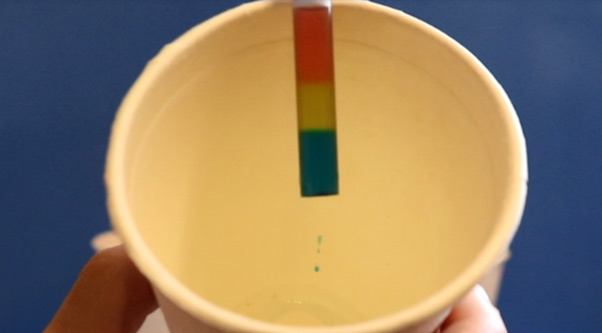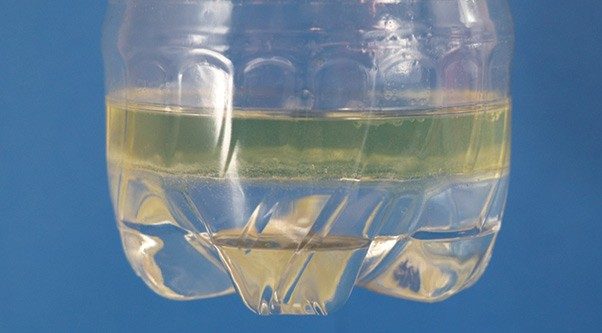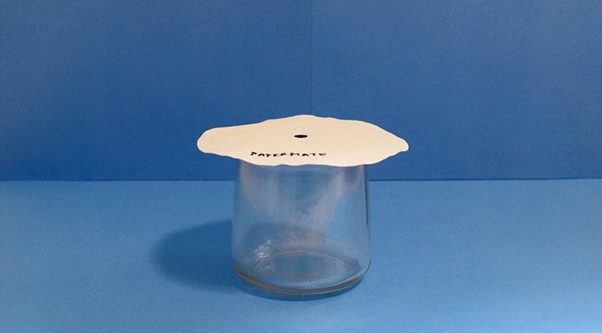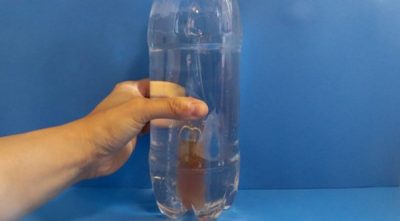
Question to investigate
How does the size of the air bubble change as you make the object sink and float?
Chemistry concepts
- Density describes substances based on much mass they have in a certain volume.
- Increasing pressure causes a gas to decrease in volume while it’s mass stays the same.
- Objects that are more dense than water sink, while objects that are less dense than water float.
Activity logistics
- Ages: As written, this activity is suited for ages 5–12.
- Time: 10–15 minutes
Be safe
- Do not drink the water used in this activity.
- Work with an adult.
- Read and follow all directions for the activity.
- Read all warning labels.
- Wear Personal Protective Equipment (PPE), such as goggles, safety glasses, or gloves.
- Tie back long hair, roll up sleeves, and secure loose clothing.
- Be sure to clean up and dispose of materials properly when you are finished with an activity.
- Wash your hands well before and after the activity
Disposal: The water used in this activity can be disposed of down the drain. If accepted locally, recycle the plastic soda bottle.
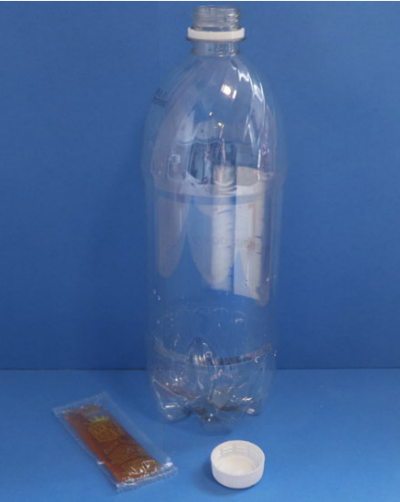
What you’ll need
- 1-liter clear plastic bottle with lid
- Water
- Condiment packet (duck sauce works best)
Procedure
- Fill the plastic bottle about three-quarters full with water.
- Your condiment packet is your diver. Carefully transfer the diver to the bottle. The diver should just barely float.
- Add water to the bottle until filled completely and screw the lid on tightly.
- Squeeze the bottle and hold. What happens to the diver?
- Release pressure from the outside of the bottle. What happens to the diver?
What did you observe?
Draw or describe your observations when you:
- Squeeze the outside of the bottle
- Release pressure on the outside of the bottle
Download this worksheet to record your observations.
How does it work?
This experiment shows what happens when the pressure on a gas increases and decreases. When you increase the pressure on the outside of the bottle, the diver should move downward. The release of pressure should cause it to float back up again. What’s happening here?
Density is a way to describe substances based on much mass they have in a certain amount of space they take up, the volume. When you squeeze the bottle, the air bubble inside of the diver is forced into a smaller space, making the gas more dense, and causes the diver to sink. When you release the bottle, the air expands and becomes less dense, so the diver rises to the top.
Scientists have known about the Cartesian Diver toy for hundreds of years. Raffaelo Maggiotti, a student of Galileo, first described it in writing in 1648. “Cartesian” is a term that may come from the last name of René Descartes, who was a French scientist, mathematician, and philosopher. Descartes is famous for saying, “I think, therefore I am.” What do you think about this toy?
This activity is adapted from an activity that originally appeared in the Celebrating Chemistry issue for National Chemistry Week 2005.

